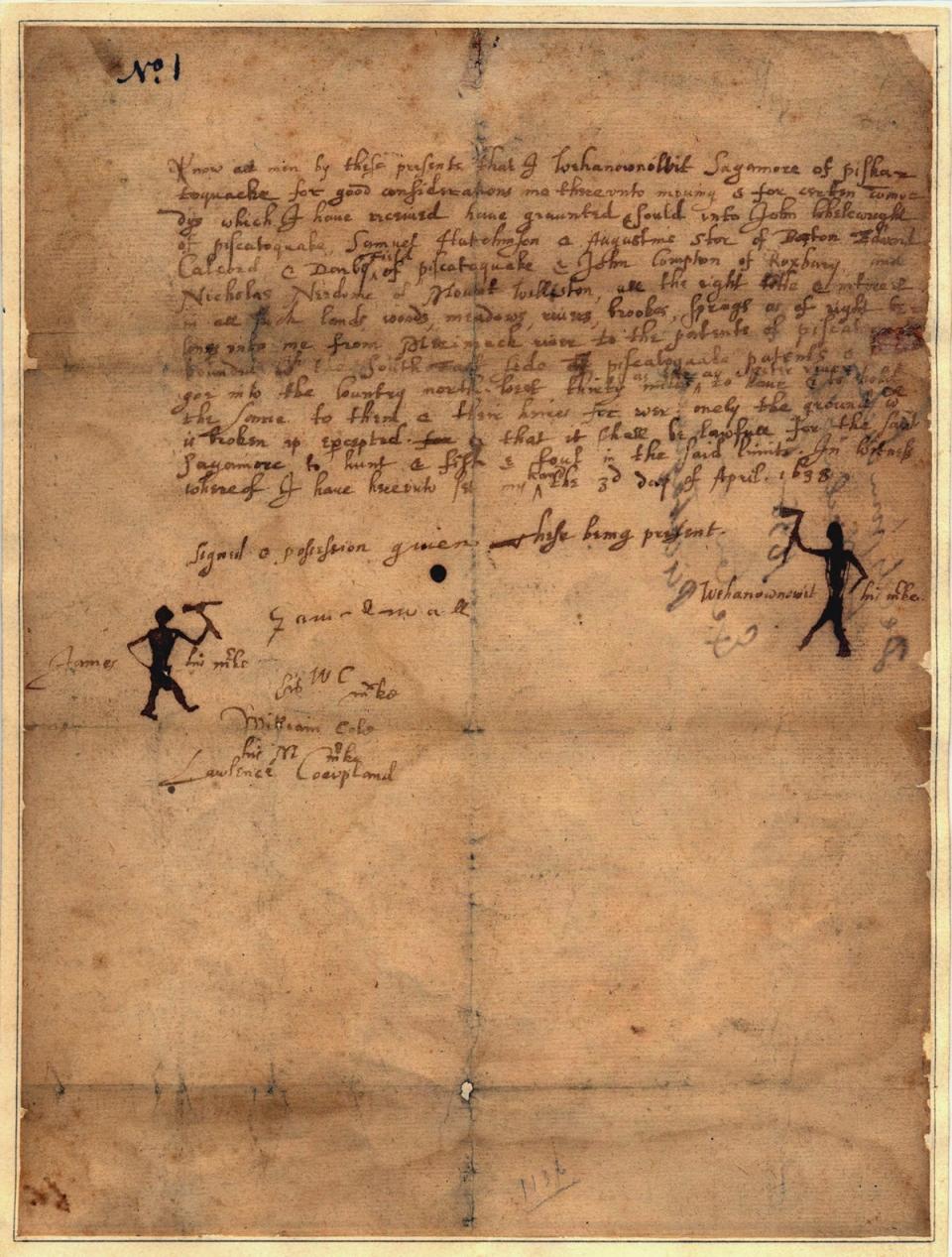Historically Speaking: Bringing the Native American presence into the light
The story of this place, M’squamscook, is longer and deeper than the history that is usually told. It is customary to begin the story of Exeter, New Hampshire in 1638 with the arrival of the Reverend John Wheelwright. But it is not the beginning of the story of this place.
The meeting of the two rivers – Exeter and Squamscott – at the falls is a place that has thousands of years of human history. People were drawn here because of the river. This is a unique location, the rolling falls of freshwater that tumbles into a salty mix that leads out to the sea. It’s a place where fish come back to breed because their ancient DNA tells them “This is the place.” And for people, the fish are delicious. A bountiful resource. M’squamscook – the place of the red fish was teeming with salmon, shad and river herrings called alewives.

For thousands of years, that can’t be stressed enough, thousands of years, people came here to fish and plant and hunt. How can we find that story? Historians are trained to read to the written records and amazingly, we usually only look at our own records, so we just re-read our own story. English settlers arrived in 1638, named it Exeter after Exeter, England, and magnanimously drafted a treaty with the local people to share the land.
Historically Speaking: Exeter under foreign rule
Our recorded history lists the names of only a few men – Wehanonowit, Pummadockyon, Aspamabough, Watohantowet. We have none of the names of women, though they were likely the ones making decisions. Reverend John Wheelwright would not have countenanced a woman’s signature on his document, so he instead had the men sign. We do not know the names of Wehanownowit’s wife or mother or aunt or daughter. The two groups lived together for a few years and then the Natives left. That’s the story. Puff. Thousands of years of indigenous history pushed aside.
By the 1670s, Exeter’s town records already reflect that the indigenous people, the Abnaki-Pennacook people who lived here, were largely gone. There are reminders of Native presence in the records, particularly in descriptions of parts of town: “Indian Field,” “the old Indian field,” “near Little Ned’s wigwam,” “the Indian path leading to Teaghacquoch” and the mispronounced “pickpocket,” which is a corruption of a native word “pequawket.” Misunderstanding, conflict, enslavement, forced people away. How do we now bring those thousands of years back to the story? The actions of our predecessors, often our direct ancestors, brought us to where we are today. We won’t find that history in books or even the archaeological evidence. How do we find it? How do we bring the Native presence into the light?
We can ask.
Historically Speaking: Dancing through the ages in Exeter
Eviction isn’t extinction. Indigenous New Hampshire people are still here. Let’s ask. Let’s stand still and listen to history not written in books but written on the land. Our town seal has a picture of an alewife on it. It doesn’t say Revolutionary War Capital or have a big schooner, one of our early industries. Maybe let’s start with that alewife and its kin and remind ourselves we live in M’squamscook, now called Exeter.
Barbara Rimkunas is the curator of the Exeter Historical Society. Support the Exeter Historical Society by becoming a member. Join online at www.exeterhistory.org.
This article originally appeared on Portsmouth Herald: Historically Speaking: Bringing the Native American presence into the light

